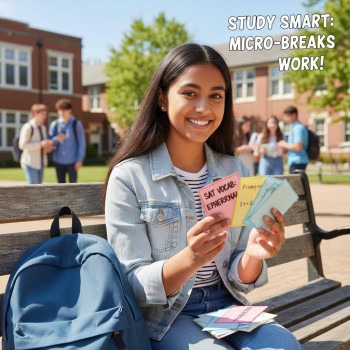What Is Superscoring — and Why Everyone’s Talking About It
If you’ve dipped a toe into college admissions conversations, you’ve probably heard the term “superscore” thrown around like it’s common knowledge. But what does it really mean? Superscoring is an admissions practice in which a college takes your best section scores from multiple SAT test dates and combines them into a single, new composite score. Instead of measuring your SAT performance on just one test day, schools that superscore look across your testing history to capture the strongest version of your abilities.
This approach feels more fair to many students: if you had an off day in Math but shone in Evidence-Based Reading and Writing on another date, a superscore can reflect the best of both. The Digital SAT changed the test format and experience, and universities have been updating—and sometimes rethinking—their score policies. The upshot for students and parents is simple: understand each college’s policy, plan your test calendar smartly, and focus on targeted improvement.

Which Top Universities Superscore — and What ‘Top’ Really Means
“Top universities” is shorthand for highly selective institutions, but they don’t all handle SAT scores the same way. Some schools explicitly superscore; others consider all official score reports but don’t combine section bests; a few evaluate a student’s single best full test score. Because policies can shift, always verify each college’s published admissions policy for the most current stance.
Broadly, you’ll find three common approaches among selective colleges:
- Explicit superscoring — the admissions office combines your best section scores across test dates.
- Score choice + holistic view — colleges accept Score Choice (you choose which test dates to send) and evaluate scores alongside transcripts, essays, and recommendations.
- Single best full test — the school considers only your best entire test administration rather than mixing sections.
For families targeting top colleges, the practical takeaway is to investigate each target’s current policy, and then design testing and reporting to match those preferences.
How the Digital SAT Shifted the Conversation
The Digital SAT brought changes to timing, interface, and section design. Those practical changes ripple into admissions policy decisions. Some admissions teams are explicitly referencing the digital format when clarifying superscoring rules and how they interpret sections across test dates. As testing evolves, universities keep talking internally about consistency, fairness, and how to compare applicants fairly — which is why staying current matters.
Why Superscoring Can Help (and When It Might Not)
Superscoring is helpful when your testing history shows uneven section results that reflect real strengths. Here’s how it often helps candidates:
- Rewards targeted improvement: if you spend time boosting one section, the improvement can count even if another section dipped on the stronger day.
- Reduces pressure to have a single perfect test day, which can lower anxiety and improve long-term performance.
- Encourages strategic planning: focus study time where it produces the biggest jump in admission-relevant metrics.
But superscoring isn’t an automatic advantage for everyone. If a college requires the full test on a single date or explicitly does not superscore, multiple test dates won’t create a composite boost. Also, some scholarships or program-specific admissions reviews may ask for all scores or a single test report. That’s why clarity — checking each program’s instructions — is critical.
Real examples (how it plays out)
Imagine a student, Maya, who scored 660 Reading & Writing and 720 Math on one test day, and on a second date scored 700 Reading & Writing and 690 Math. For a school that superscores by section, Maya’s superscore would be 700 R&W + 720 Math = 1420, which is stronger than either full-test result. For a school that only accepts the highest full-test, Maya would have to submit the 1380 or 1390 from a single date — so her testing strategy would be different.
How to Build a Superscore-Friendly Testing Plan
When you know which schools superscore and which don’t, you can build a testing plan that maximizes your chances. Here’s a step-by-step strategy:
- Research: make a spreadsheet of your target colleges and their current SAT reporting policies (superscore? single-best? test-optional deadlines?).
- Baseline: take a diagnostic Digital SAT early (ideally sophomore or junior year) to spot section strengths and weaknesses.
- Prioritize: focus study time on the section that offers the most realistic score gain in the shortest time.
- Stagger tests: if you’re targeting superscoring schools, schedule at least two test dates several months apart to allow meaningful improvement.
- Practice real conditions: especially with the Digital SAT, practice on devices and with timing that simulates test day to build stamina and familiarity.
Timing and the Admissions Calendar
Apply these timing rules of thumb:
- Early Decision/Early Action applicants: aim to have at least one solid test report before early deadlines; use a later test date only if the college accepts superscores and your improved section will meaningfully raise your composite.
- Regular Decision applicants: you have more flexibility to run multiple test cycles, especially if you want to chase incremental section gains.
How to Report Scores Smartly
Score Choice allows you to choose which test dates to send to colleges — but it only helps if you understand each college’s policies and the timing of the Score Choice window. When a college superscores and accepts Score Choice, you can send the test dates that show your best sections and omit weaker full-test administrations. If a college doesn’t accept Score Choice or asks for all official scores, you’ll need to be strategic about which dates you take and when.
Checklist for Reporting
- Confirm the college’s policy on superscoring and Score Choice before sending any scores.
- Keep careful notes of the sections and totals for each test date so you can quickly decide what to send.
- For scholarship applications, double-check whether they require all reported scores — scholarships sometimes follow different rules than admissions.
- Ask your school counselor if you’re unsure; they’ve likely handled dozens of students with similar questions.
Study Strategies That Yield Section Gains
Superscoring rewards targeted gains, so use that to your advantage. Here are practical study approaches that work for the Digital SAT:
- Diagnostic-first: don’t guess where to spend time. Run a timed Digital SAT practice, then analyze mistakes by question type.
- Deliberate practice: work on specific question types (grid-in math, command-of-evidence reading items, digital navigation skills) rather than random problem sets.
- Timed sets: practice under full digital conditions so you learn pacing and screen-reading strategies.
- One skill at a time: for instance, dedicate two weeks solely to algebraic skill-building, then reassess.
- Review aggressively: logging errors and revisiting them after a week helps move concepts into long-term memory.
Personalized tutoring can speed this process: 1-on-1 guidance helps you identify and fix habits that cost time and points. Sparkl’s personalized tutoring model — tailored study plans, expert tutors, and AI-driven insights — can be especially effective for building targeted skill gains that matter for superscoring.
Table: Choosing Test Dates Based on Admissions Timeline
| Application Phase | Recommended Latest Test Date | Why |
|---|---|---|
| Early Decision/Early Action | October (of senior year) | Allows time for score reporting and for one last retake if needed before ED/EA deadlines. |
| Regular Decision | December (of senior year) | Gives students multiple attempts and enough time to send improved scores by application deadlines. |
| Deferred/Waitlist | February–March (after initial decision) | Submit improved scores for reconsideration or scholarship reviews if allowed. |
Interpreting Superscores in the Holistic Review
Even when colleges use superscores, admissions is rarely about a single number. Top schools still weigh GPA, course rigor, essays, recommendations, extracurriculars, and demonstrated interest. Superscoring helps present your best academic test performance, but it won’t replace a weak transcript or a lackluster application narrative.
Think of a superscore as one polished datapoint in a broader story. A smart application ties your scores to a clear narrative: why you pursued challenging classes, what you learned from setbacks, and how your test preparation reflects discipline and curiosity. That’s where advising and tutoring (including personalized options like Sparkl’s 1-on-1 tutors and tailored study plans) can help craft both the numerical and narrative parts of your profile.
Example: The Balanced Applicant
Consider Jonah, who has strong extracurriculars in robotics but a slightly lower GPA due to a tough sophomore schedule. Jonah uses targeted tutoring to raise his Math section across two test dates and combines his superscored SAT with a powerful supplemental essay about problem-solving. The improved score strengthened admissions readers’ confidence in his academic readiness, while his essay and recommendations provided the context.

Common Questions From Families
Q: If a school superscores, should I take the SAT multiple times?
A: Yes — but with purpose. Don’t test repeatedly without improvement. Plan practice cycles and set measurable targets (e.g., aiming for a 30-point section gain). Use diagnostics and targeted tutoring to ensure each test has a meaningful chance of producing better section scores.
Q: Does superscoring advantage international students differently?
A: Superscoring can help any student who improves across test dates, including international applicants. What matters is knowing how a specific college processes scores. For international applicants, attention to test administration timing and score-reporting windows is particularly important.
Q: Can a superscore hurt me?
A: Not directly. However, if your application or specific scholarships require all scores, sending multiple test dates without context can complicate an admissions committee’s interpretation. The key is to read each school’s instructions carefully and, when in doubt, ask the admissions office or your counselor.
Practical Tools: What to Track in Your Superscore Spreadsheet
Create a simple spreadsheet to keep score management sane. Track these columns:
- Test date
- Digital SAT section scores (R&W and Math)
- Total score
- Which colleges accept superscores / require all scores
- Scholarships with special score rules
- Decision deadlines
Having everything in one place removes last-minute stress and helps you decide quickly which dates to send when an application deadline looms.
When to Consider Professional Help (and What to Expect)
Many students benefit from guided, personalized prep — especially when the goal is targeted section improvement for superscoring. Professional tutors do more than teach content: they diagnose pattern mistakes, plan efficient study blocks, and simulate test conditions. Look for the following in a tutoring program:
- One-on-one sessions that adapt to your learning pace.
- Data-driven recommendations that identify high-leverage weaknesses.
- Practice on digital platforms that mirror the actual test environment.
- Progress tracking and regular reassessment to measure gains.
Sparkl’s personalized tutoring model offers tailored study plans and expert tutors with AI-driven insights that can accelerate targeted gains — particularly useful when you have limited time before a final test date or an early application deadline.
Putting It All Together: A Sample 6-Month Superscore Plan
Below is a compact roadmap you can adapt to your timeline. This plan assumes a goal of improving one section by roughly 30–60 points — a realistic target with focused study.
- Month 1: Diagnostic Digital SAT; analyze weak question types; set concrete section goals.
- Month 2: Focused skill blocks (two topics per week), daily short drills, weekly timed section practice.
- Month 3: Full test simulation every other week; targeted review of repeated errors; adjust study plan.
- Month 4: Take a real test date; rest and reflect after test; analyze scoreboard to see which sections improved.
- Month 5: Recalibrate; if improvement occurred, double down on the remaining weak area; work with a tutor for strategy refinement.
- Month 6: Final test date scheduled early in the month; submit scores according to each college’s policy and application timeline.
Final Tips for Students and Parents
- Start early: even small, consistent practice beats last-minute cramming.
- Be strategic with test dates: one or two well-prepared attempts are better than many half-ready ones.
- Keep the bigger picture in mind: the SAT is one part of a holistic application.
- Use targeted help: a short run of one-on-one tutoring can produce big section gains — especially when guided by data and practice on the digital interface.
- Stay flexible: policies evolve. Re-check each college’s admissions page as you near application season.
Closing Thought: Scores Serve Your Story — Don’t Let the Numbers Run the Show
Superscoring makes the SAT kinder to students who improve through hard work, but it’s not a magic wand. The best results come from a combination of smart planning, disciplined practice, and clear thinking about where the SAT fits into your whole application. Whether you’re a student trying to balance schoolwork and test prep or a parent helping to map out options, focus on measurable progress and a calm timeline.
When you need focused, efficient help to convert study time into measurable gains, consider personalized tutoring options that emphasize targeted practice and data-informed strategies. Programs like Sparkl offer 1-on-1 guidance, tailored study plans, expert tutors, and AI-driven insights to help shape a testing strategy aligned with your goals — and with the superscoring realities of many selective colleges. Use those resources to tell the strongest version of your academic story.
Good luck — and remember: a thoughtfully planned testing journey, paired with focused effort, can make superscoring work for you.

















No Comments
Leave a comment Cancel